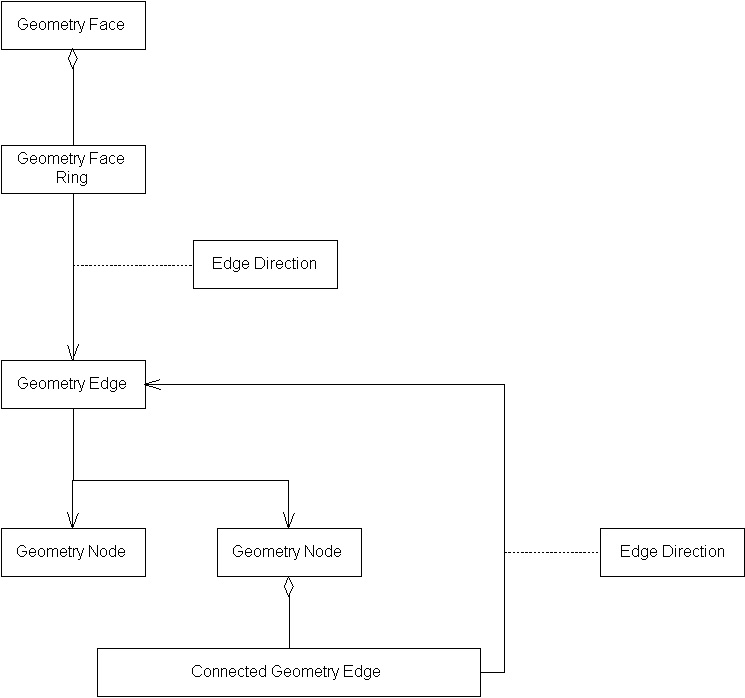Consider a <Geometry Edge> representing part of the boundary of a <Geometry Face>, which in turn represents a lake. The endpoints of the edge are provided by its associated <Geometry Node> instances.

In order to supply clean, high-level topological information, the data provider gives each of these < Geometry Nodes> a < Connected Geometry Edge> component, which relates it back to each <Geometry Edge> of which it is a part. This allows a consumer, encountering one of the < Geometry Nodes>, to determine what edges it participates in.